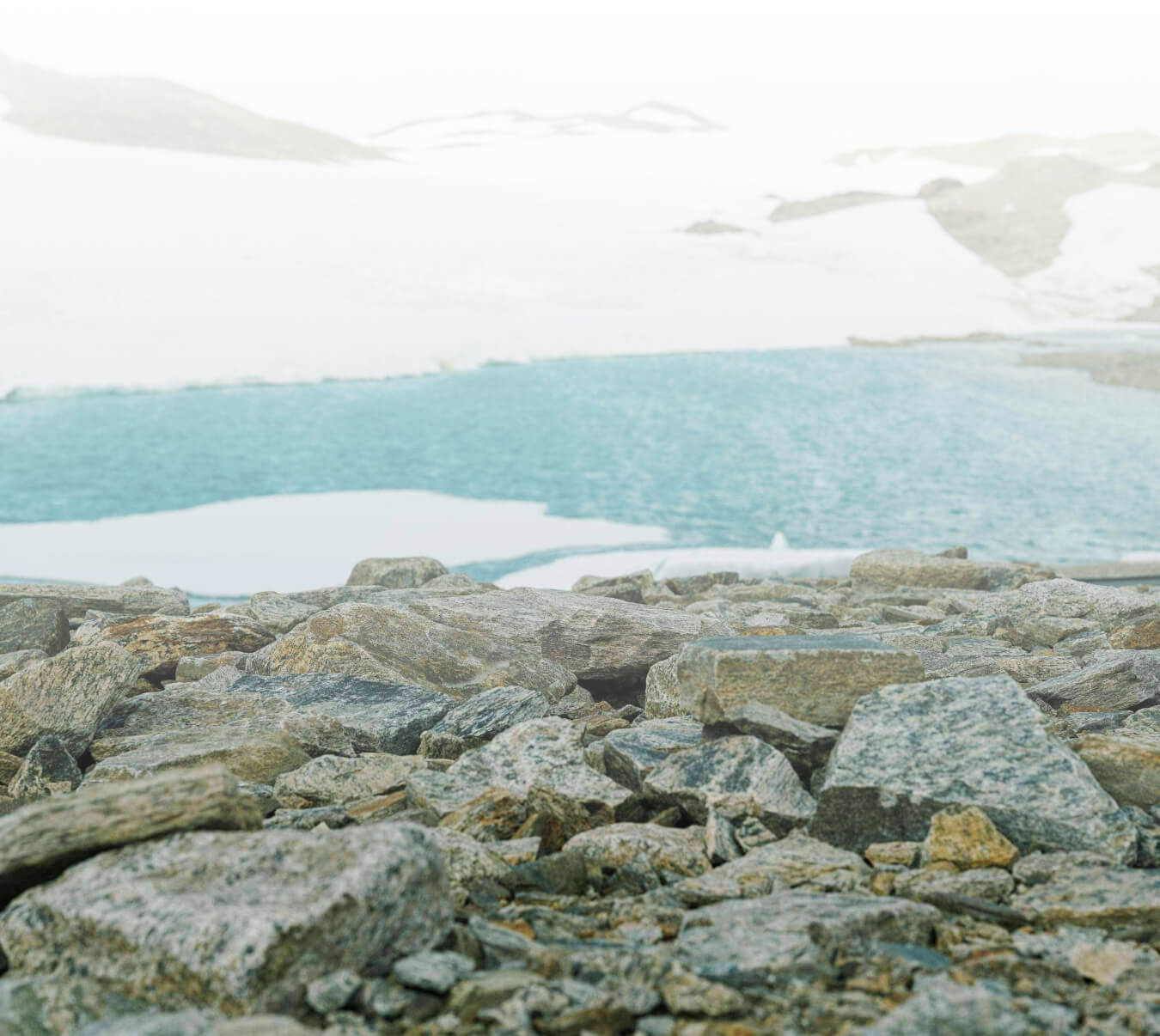

Antarctica.
VIII NOVOLAZAREVSKAYA STATION. THE SCHIRMACHER OASIS.
VIII NOVOLAZAREVSKAYA STATION. THE SCHIRMACHER OASIS.
Antarctica. Chapter VIII


NOVOLAZAREVSKAYA STATION. THE SCHIRMACHER OASIS
S70°46 E11°50
Coordinates
123 meters
Height above sea level
OASIS
OASIS
The final point of our journey and observations on the ‘colonists’ was the ALCI camp near the Russian research station Novolazarevskaya. This camp was also once a research station, but now it has been converted into a tourist base, complete with houses and a sauna. There are two houses, with a total of six rooms and enough space for 15 people.
The final point of our journey and observations on the ‘colonists’ was the ALCI camp near the Russian research station Novolazarevskaya. This camp was also once a research station, but now it has been converted into a tourist base, complete with houses and a sauna. There are two houses, with a total of six rooms and enough space for 15 people.

The small houses at the base are mobile. If necessary, they can be moved from place to place.

The small houses at the base are mobile. If necessary, they can be moved from place to place.
THE BASE ACCEPTS GUESTS ONLY IN THE SUMMER. OUR GROUP WAS ONE OF THE LAST TO ARRIVE HERE IN THE 2019-2020 SEASON.
THE BASE ACCEPTS GUESTS ONLY IN THE SUMMER. OUR GROUP WAS ONE OF THE LAST TO ARRIVE HERE IN THE 2019-2020 SEASON.
The southernmost log banya on Earth is located here at the Schirmacher Oasis.
Here, as well as at the South Pole, you can visit polar explorers, but this time at Novolazarevskaya (Novo). This station was built to replace Lazarev station in 1961, and is located in the southeastern part of the Schirmacher Oasis.
Here, as well as at the South Pole, you can visit polar explorers, but this time at Novolazarevskaya (Novo). This station was built to replace Lazarev station in 1961, and is located in the southeastern part of the Schirmacher Oasis.
Tracks lead from the station, and at the beginning of the season, vehicles pass along them to check and ‘tamp’ the road. These tracks are then used to deliver fuel and drive vehicles in season. On the way back, our convoy managed to break our record speed on the expedition of 60 kilometers per hour on these tracks.
Tracks lead from the station, and at the beginning of the season, vehicles pass along them to check and ‘tamp’ the road. These tracks are then used to deliver fuel and drive vehicles in season. On the way back, our convoy managed to break our record speed on the expedition of 60 kilometers per hour on these tracks.
THE ENVIRONMENT IN THIS AREA IS ALSO COMPLETELY DIFFERENT. THIS IS A RARE REGION IN ANTARCTICA WHICH IS NOT ALL COVERED WITH ICE, WITH ABOUT 35 KM² MADE UP OF ROCKS.
THE ENVIRONMENT IN THIS AREA IS ALSO COMPLETELY DIFFERENT. THIS IS A RARE REGION IN ANTARCTICA WHICH IS NOT ALL COVERED WITH ICE, WITH ABOUT 35 KM² MADE UP OF ROCKS.
As such, it is quite picturesque here. Especially after 20 days of driving through solid white desert. There are lakes here that connect with the ocean under the glacier. This is noticeable during the ebb and flow of the tide. Just 50 km from the station inland, the ice height reaches 1000 meters above sea level.
As such, it is quite picturesque here. Especially after 20 days of driving through solid white desert. There are lakes here that connect with the ocean under the glacier. This is noticeable during the ebb and flow of the tide. Just 50 km from the station inland, the ice height reaches 1000 meters above sea level.



On the way to the station, there are nunataks—sharp mountain peaks sticking out from under the snow.
On the way to the station, there are nunataks—sharp mountain peaks sticking out from under the snow.
Not far from the station, 12 km to the south, there is the runway on a glacier from which our group flew. First to White Desert runaway, then finally to Cape Town.
Not far from the station, 12 km to the south, there is the runway on a glacier from which our group flew. First to White Desert runaway, then finally to Cape Town.



Views of the runway near Novo.
Views of the runway near Novo.
FINAL DESTINATION
FINAL DESTINATION
AFTER 21 DAYS IN ANTARCTICA, WE BEGAN TO UNDERSTAND THOSE WHO RETURN HERE AGAIN AND AGAIN.
AFTER 21 DAYS IN ANTARCTICA, WE BEGAN TO UNDERSTAND THOSE WHO RETURN HERE AGAIN AND AGAIN.
Everyone has a different motivation, it often depends on age, life goals and even on the country from which the person came. Some are here for quick money, some for a feeling of isolation from external stimuli, and there are others, too, running away from a large family. Antarctica has become a refuge, so far temporary, for all who, for one reason or another, do not find a place for themselves in the ‘real’ world and are looking for an extreme alternative to that. However, it is also obvious that the remoteness and inaccessibility of the white continent will not be with us for long. In just a couple of years, Antarctica, even formally, will not be able to be called uninhabited.
Everyone has a different motivation, it often depends on age, life goals and even on the country from which the person came. Some are here for quick money, some for a feeling of isolation from external stimuli, and there are others, too, running away from a large family. Antarctica has become a refuge, so far temporary, for all who, for one reason or another, do not find a place for themselves in the ‘real’ world and are looking for an extreme alternative to that. However, it is also obvious that the remoteness and inaccessibility of the white continent will not be with us for long. In just a couple of years, Antarctica, even formally, will not be able to be called uninhabited.
BEFORE HEADING HOME, WE ASKED OUR GUIDES AND THE PEOPLE WE MET ON THE WAY WHAT ANTARCTICA MEANS TO THEM, HOW THEY GOT HERE, WHO AND WHAT THEY REMEMBERED OF THEIR STAY HERE, AND WHAT, IN THEIR OPINION, IS HAPPENING WITH PEOPLE ON THE WHITE CONTINENT.
BEFORE HEADING HOME, WE ASKED OUR GUIDES AND THE PEOPLE WE MET ON THE WAY WHAT ANTARCTICA MEANS TO THEM, HOW THEY GOT HERE, WHO AND WHAT THEY REMEMBERED OF THEIR STAY HERE, AND WHAT, IN THEIR OPINION, IS HAPPENING WITH PEOPLE ON THE WHITE CONTINENT.

“
I was supposed to come to Antarctica in 2010 and then repeat the trip a year later, but I broke my leg and didn't go the first time. Instead, I stayed to work for another four weeks in South Africa and went on the second expedition. It was supposed to be a large expedition of ten people and four vehicles, but it turned out that only four went and in two vehicles. We then set a record for travel time from Novo to the South Pole and back. It was a kind of test ride for the vehicles—and for me, too. We originally planned to drive only to FD83, but everything was going so well that we decided to keep going. We only set up camp at the fuel depot, the rest of the time we drove, changing the person at the wheel every 5 hours.
It's an adventure for me, too. I have never slept in a tent as much as in Antarctica. The last time was from December 19 to January 20. This is definitely a completely different experience. For a lifestyle like this, you have to change your habits. And you see people from a completely different point of view, when you are locked up with them for 20 days in the same car. You have to talk about something, and so people tell a lot of interesting stories. On the expedition, we joked and talked all the time. And by the end of the expedition, we communicated without any problems even with those team members who hardly spoke English. Everyone had already gotten used to the body language.
It's an adventure for me, too. I have never slept in a tent as much as in Antarctica. The last time was from December 19 to January 20. This is definitely a completely different experience. For a lifestyle like this, you have to change your habits. And you see people from a completely different point of view, when you are locked up with them for 20 days in the same car. You have to talk about something, and so people tell a lot of interesting stories. On the expedition, we joked and talked all the time. And by the end of the expedition, we communicated without any problems even with those team members who hardly spoke English. Everyone had already gotten used to the body language.
I was supposed to come to Antarctica in 2010 and then repeat the trip a year later, but I broke my leg and didn't go the first time. Instead, I stayed to work for another four weeks in South Africa and went on the second expedition. It was supposed to be a large expedition of ten people and four vehicles, but it turned out that only four went and in two vehicles. We then set a record for travel time from Novo to the South Pole and back. It was a kind of test ride for the vehicles—and for me, too. We originally planned to drive only to FD83, but everything was going so well that we decided to keep going. We only set up camp at the fuel depot, the rest of the time we drove, changing the person at the wheel every 5 hours.
It's an adventure for me, too. I have never slept in a tent as much as in Antarctica. The last time was from December 19 to January 20. This is definitely a completely different experience. For a lifestyle like this, you have to change your habits. And you see people from a completely different point of view, when you are locked up with them for 20 days in the same car. You have to talk about something, and so people tell a lot of interesting stories. On the expedition, we joked and talked all the time. And by the end of the expedition, we communicated without any problems even with those team members who hardly spoke English. Everyone had already gotten used to the body language.
It's an adventure for me, too. I have never slept in a tent as much as in Antarctica. The last time was from December 19 to January 20. This is definitely a completely different experience. For a lifestyle like this, you have to change your habits. And you see people from a completely different point of view, when you are locked up with them for 20 days in the same car. You have to talk about something, and so people tell a lot of interesting stories. On the expedition, we joked and talked all the time. And by the end of the expedition, we communicated without any problems even with those team members who hardly spoke English. Everyone had already gotten used to the body language.


“
The first time, it was pretty scary to come, because I was warned that I would have to do everything, regardless of the time of day or night. Plus, you can't just pack up and leave if something goes wrong. But then I thought—so many workers come back here again and again every year, so this is not the worst place to be. I was so glad when they responded to me that I signed the contract without even looking it over.
For me, the most important and the most interesting thing here is the people. Both those who work here and the tourists. They are weird, and in a variety of ways. It can be very interesting to meet with them. They all had to give up a lot—some quit their jobs, some saved for 10 years just to spend a few weeks here.
For me, the most important and the most interesting thing here is the people. Both those who work here and the tourists. They are weird, and in a variety of ways. It can be very interesting to meet with them. They all had to give up a lot—some quit their jobs, some saved for 10 years just to spend a few weeks here.
The first time, it was pretty scary to come, because I was warned that I would have to do everything, regardless of the time of day or night. Plus, you can't just pack up and leave if something goes wrong. But then I thought—so many workers come back here again and again every year, so this is not the worst place to be. I was so glad when they responded to me that I signed the contract without even looking it over.
For me, the most important and the most interesting thing here is the people. Both those who work here and the tourists. They are weird, and in a variety of ways. It can be very interesting to meet with them. They all had to give up a lot—some quit their jobs, some saved for 10 years just to spend a few weeks here.
For me, the most important and the most interesting thing here is the people. Both those who work here and the tourists. They are weird, and in a variety of ways. It can be very interesting to meet with them. They all had to give up a lot—some quit their jobs, some saved for 10 years just to spend a few weeks here.


“
In the 2019-2020 season, of all the tourists we met, I was most impressed by Geoff Wilson from Australia. It seems to me that he’s not even human, being that he’s so strong—morally and physically. He set a new record for distance covered on skis and with a kite—almost 6,000 km without support. That’s amazing. He carried with him two pairs of sleds with more than 200 kg of load on each and ten kites of different sizes. He is, of course, incredibly smart. He once told me: ‘Many have tried to make this trip. But they haven’t succeeded. Do you know why? Because they sat in tents and waited for the perfect day and perfect weather. That's why I brought ten different kites. After all, the wind is always here, you just need to pick the right kite and get it to the right height.
I also remember Sarah McLondry, she skied from base to the Pole of Inaccessibility without any support.
I also remember Sarah McLondry, she skied from base to the Pole of Inaccessibility without any support.
In the 2019-2020 season, of all the tourists we met, I was most impressed by Geoff Wilson from Australia. It seems to me that he’s not even human, being that he’s so strong—morally and physically. He set a new record for distance covered on skis and with a kite—almost 6,000 km without support. That’s amazing. He carried with him two pairs of sleds with more than 200 kg of load on each and ten kites of different sizes. He is, of course, incredibly smart. He once told me: ‘Many have tried to make this trip. But they haven’t succeeded. Do you know why? Because they sat in tents and waited for the perfect day and perfect weather. That's why I brought ten different kites. After all, the wind is always here, you just need to pick the right kite and get it to the right height.
I also remember Sarah McLondry, she skied from base to the Pole of Inaccessibility without any support.
I also remember Sarah McLondry, she skied from base to the Pole of Inaccessibility without any support.


“
I try to go to places where there are as few people as possible. And Antarctica is one of the last places on Earth where there are almost no people and there is still no developed tourism industry.
I'm not afraid of the cold. It's not that I'm trying to put myself in the harshest conditions possible, but it makes me appreciate what I have even more when everything is calm and comfortable.
I'm not afraid of the cold. It's not that I'm trying to put myself in the harshest conditions possible, but it makes me appreciate what I have even more when everything is calm and comfortable.
I try to go to places where there are as few people as possible. And Antarctica is one of the last places on Earth where there are almost no people and there is still no developed tourism industry.
I'm not afraid of the cold. It's not that I'm trying to put myself in the harshest conditions possible, but it makes me appreciate what I have even more when everything is calm and comfortable.
I'm not afraid of the cold. It's not that I'm trying to put myself in the harshest conditions possible, but it makes me appreciate what I have even more when everything is calm and comfortable.


“
Everyone who comes to Antarctica wants to go to the South Pole. However, it’s located at an altitude of 2835 meters, and if you compare it with the equator, you need to add another thousand meters to this according to how you feel at certain altitudes. You start at 700 meters, for example, on the Union Glacier. But at the pole, on the whole, there is nothing to do except to check in and say ‘well, here I am’. After that, you get on the plane and come back. For me, a trip by car to the same South Pole is much better. Firstly, you get the chance to acclimate gradually, and secondly, the expedition itself... this is something. At first, you come across incredible mountains on the way, and you feel completely alone in this world. Then you find yourself on a snowy plateau, and there is absolutely nothing around but snow. And you keep going and going. It affects your consciousness somehow. You are lost in time and space, and only GPS tells you where you are.
Everyone who comes to Antarctica wants to go to the South Pole. However, it’s located at an altitude of 2835 meters, and if you compare it with the equator, you need to add another thousand meters to this according to how you feel at certain altitudes. You start at 700 meters, for example, on the Union Glacier. But at the pole, on the whole, there is nothing to do except to check in and say ‘well, here I am’. After that, you get on the plane and come back. For me, a trip by car to the same South Pole is much better. Firstly, you get the chance to acclimate gradually, and secondly, the expedition itself... this is something. At first, you come across incredible mountains on the way, and you feel completely alone in this world. Then you find yourself on a snowy plateau, and there is absolutely nothing around but snow. And you keep going and going. It affects your consciousness somehow. You are lost in time and space, and only GPS tells you where you are.


“
I started thinking about going to Antarctica in 2009-2010 when Arctic Trucks started going there regularly. I was 14-15 years old, and I looked closely at the cars, tried to drive an all-wheel drive SUV. And for me, back then, the work of Arctic Trucks was something incredible and unattainable. So this idea has been in my head ever since. In 2016, I received an offer to go there and did not hesitate for a second.
Antarctica is a very special place, it gives you such a sense of tranquility. There is no need to worry that bills have not been paid, and about everything else that makes up our usual daily lives. Here, you have a goal, and all your actions are aimed at realizing this goal. Life is much easier here. This is an escape from social networks, from the familiar world. Yes, while you are here, you do not think it is something particularly interesting and cool, but when you return, you only think of how good it was there and how much you want to return. So, I'm ready to go there as long as there is the opportunity to do so.
Of course, for work like this you need to know yourself very well—to understand your priorities. It seems to me that it is good for everyone to find themself in a situation one day where the only thing they have to worry about is their survival.
And before Antarctica, I understood that being alone was not a problem for me. I worked for a long time at a mountain camp during the winter, and there were almost no people there, only on weekends were there occasional guests. I think my trips to Antarctica greatly influenced the way I began to spend my time at home. Here, it seems that so much is happening, that you miss so much, and then you return home and realize that nothing happened in three months, the light in the living room still does not burn. Three months is so little time, on the one hand, but on the other hand, during this time you can get so much done if you are organized and focused, and not spending a ton of time, for example, on social networks.
Antarctica is a very special place, it gives you such a sense of tranquility. There is no need to worry that bills have not been paid, and about everything else that makes up our usual daily lives. Here, you have a goal, and all your actions are aimed at realizing this goal. Life is much easier here. This is an escape from social networks, from the familiar world. Yes, while you are here, you do not think it is something particularly interesting and cool, but when you return, you only think of how good it was there and how much you want to return. So, I'm ready to go there as long as there is the opportunity to do so.
Of course, for work like this you need to know yourself very well—to understand your priorities. It seems to me that it is good for everyone to find themself in a situation one day where the only thing they have to worry about is their survival.
And before Antarctica, I understood that being alone was not a problem for me. I worked for a long time at a mountain camp during the winter, and there were almost no people there, only on weekends were there occasional guests. I think my trips to Antarctica greatly influenced the way I began to spend my time at home. Here, it seems that so much is happening, that you miss so much, and then you return home and realize that nothing happened in three months, the light in the living room still does not burn. Three months is so little time, on the one hand, but on the other hand, during this time you can get so much done if you are organized and focused, and not spending a ton of time, for example, on social networks.
I started thinking about going to Antarctica in 2009-2010 when Arctic Trucks started going there regularly. I was 14-15 years old, and I looked closely at the cars, tried to drive an all-wheel drive SUV. And for me, back then, the work of Arctic Trucks was something incredible and unattainable. So this idea has been in my head ever since. In 2016, I received an offer to go there and did not hesitate for a second.
Antarctica is a very special place, it gives you such a sense of tranquility. There is no need to worry that bills have not been paid, and about everything else that makes up our usual daily lives. Here, you have a goal, and all your actions are aimed at realizing this goal. Life is much easier here. This is an escape from social networks, from the familiar world. Yes, while you are here, you do not think it is something particularly interesting and cool, but when you return, you only think of how good it was there and how much you want to return. So, I'm ready to go there as long as there is the opportunity to do so.
Of course, for work like this you need to know yourself very well—to understand your priorities. It seems to me that it is good for everyone to find themself in a situation one day where the only thing they have to worry about is their survival.
And before Antarctica, I understood that being alone was not a problem for me. I worked for a long time at a mountain camp during the winter, and there were almost no people there, only on weekends were there occasional guests. I think my trips to Antarctica greatly influenced the way I began to spend my time at home. Here, it seems that so much is happening, that you miss so much, and then you return home and realize that nothing happened in three months, the light in the living room still does not burn. Three months is so little time, on the one hand, but on the other hand, during this time you can get so much done if you are organized and focused, and not spending a ton of time, for example, on social networks.
Antarctica is a very special place, it gives you such a sense of tranquility. There is no need to worry that bills have not been paid, and about everything else that makes up our usual daily lives. Here, you have a goal, and all your actions are aimed at realizing this goal. Life is much easier here. This is an escape from social networks, from the familiar world. Yes, while you are here, you do not think it is something particularly interesting and cool, but when you return, you only think of how good it was there and how much you want to return. So, I'm ready to go there as long as there is the opportunity to do so.
Of course, for work like this you need to know yourself very well—to understand your priorities. It seems to me that it is good for everyone to find themself in a situation one day where the only thing they have to worry about is their survival.
And before Antarctica, I understood that being alone was not a problem for me. I worked for a long time at a mountain camp during the winter, and there were almost no people there, only on weekends were there occasional guests. I think my trips to Antarctica greatly influenced the way I began to spend my time at home. Here, it seems that so much is happening, that you miss so much, and then you return home and realize that nothing happened in three months, the light in the living room still does not burn. Three months is so little time, on the one hand, but on the other hand, during this time you can get so much done if you are organized and focused, and not spending a ton of time, for example, on social networks.


“
I founded the project “Antropogeos. Geography of people". The subject of research of this institution is Human and Place / Environment, Place / Environment and Human, Human in Place / Environment. As a place of being influences on a person, on a culture, and as a person himself changes the place. Antarctica is becoming more and more popular, and therefore the connection between Human and Place / Environment is just emerging here. Capturing and tracing the moment of such a birth was the main idea of my expedition.
I founded the project “Antropogeos. Geography of people". The subject of research of this institution is Human and Place / Environment, Place / Environment and Human, Human in Place / Environment. As a place of being influences on a person, on a culture, and as a person himself changes the place. Antarctica is becoming more and more popular, and therefore the connection between Human and Place / Environment is just emerging here. Capturing and tracing the moment of such a birth was the main idea of my expedition.

Previous chapter
VII THE POLE OF INACCESSIBILITY
continue reading ➔
ALL EXHIBITIONS
continue reading ➔
ALL EXHIBITIONS
Previous chapter
VII THE POLE OF INACCESSIBILITY
©
Anthropogeos. 2021
Contacts
Our social channels











